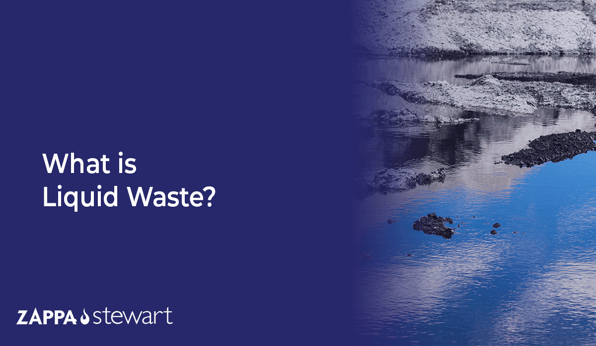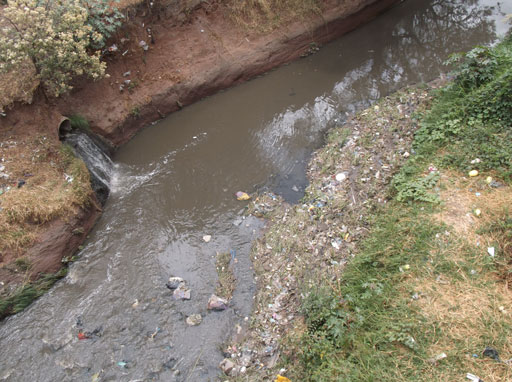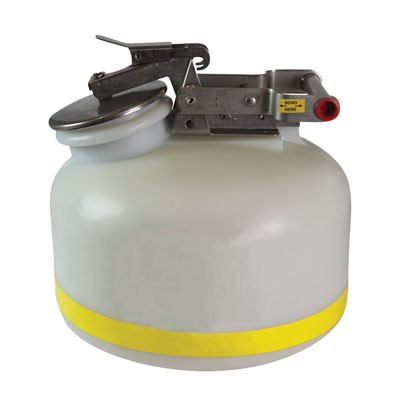Leading Industrial Wastewater Treatment Solutions: Making Sure Compliance and Effectiveness
Leading Industrial Wastewater Treatment Solutions: Making Sure Compliance and Effectiveness
Blog Article
How Fluid Waste Disposal Works: An In-depth Summary of Strategies and Technologies Used

Review of Liquid Waste Types
The complexity of liquid waste types demands a detailed understanding of their characteristics and implications for disposal. Liquid waste can extensively be categorized into a number of types, including industrial, community, agricultural, and dangerous waste. Each group shows distinctive homes, calling for specific monitoring approaches to minimize ecological and health and wellness risks.
Industrial liquid waste stems from making procedures and commonly contains a variety of impurities, such as hefty metals, solvents, and organic compounds. Municipal liquid waste, mainly comprising wastewater from households and business facilities, includes raw material, nutrients, and virus (industrial wastewater treatment). Agricultural fluid waste, including overflow from farms, might consist of fertilizers, pesticides, and animal waste, posturing risks to water top quality and communities
Harmful liquid waste is identified by its toxicity, sensitivity, or potential to trigger harm. Comprehending these diverse fluid waste kinds is important for establishing effective disposal approaches and ensuring compliance with ecological laws.
Physical Treatment Approaches

Testing is the first action, where larger fragments and debris are gotten rid of from the fluid waste utilizing displays or grates. This procedure protects downstream equipment from damages and ensures smoother procedure. Complying with testing, sedimentation utilizes gravitational force to different solids from fluids. In sedimentation storage tanks, much heavier particles settle at the base, forming a sludge layer, while the cleared up liquid can be more dealt with.
Filtration is another crucial method that includes passing the fluid with permeable materials, such as sand or membranes, to record smaller sized particles. This step enhances the quality of the fluid, making it suitable for subsequent therapy processes.

Chemical Therapy Methods
Chemical treatment techniques are important for effectively handling liquid waste, particularly in addressing liquified and colloidal pollutants that physical methods may not adequately remove. These methods use numerous chemical representatives to reduce the effects of, precipitate, or change unsafe materials into much less hazardous kinds.
One typical technique is coagulation and flocculation, where chemicals such as alum or ferric more information chloride are included in advertise the gathering of put on hold fragments. This procedure enhances sedimentation, enabling much easier elimination of the resulting sludge. Furthermore, oxidation procedures, employing representatives like chlorine or ozone, are used to damage down complex natural substances and virus, providing the waste more secure for discharge or additional therapy.
Neutralization is an additional important technique, which adjusts the pH of acidic or alkaline waste streams to neutral degrees, avoiding potential injury to downstream systems and the setting. In addition, advanced oxidation processes (AOPs) make use of mixes of oxidants and ultraviolet light to deteriorate persistent contaminants, achieving a higher degree of treatment efficiency.
Biological Therapy Procedures
Biological therapy procedures play a vital function in the administration of liquid waste by using microbes to decompose raw material and decrease contaminant degrees. These procedures can be extensively classified right into aerobic and anaerobic therapies, each utilizing details microbial areas to accomplish efficient waste destruction.
Aerobic therapy involves using oxygen to facilitate the breakdown of natural products by microorganisms. This process is generally executed in turned on sludge systems, where oygenation storage tanks supply a favorable environment for microbial development, causing the oxidation of natural pollutants. The resultant biomass can be separated from dealt with effluent via sedimentation.
On the other hand, anaerobic therapy happens in the absence of oxygen, depending on different microorganisms to damage down raw material. This method is especially useful for high-strength waste, as it generates biogas, a renewable resource source, while minimizing sludge manufacturing. Technologies such as anaerobic digesters are frequently used in industrial and metropolitan applications.
Both anaerobic and cardio organic treatments not just lessen the environmental effect of liquid waste yet also promote source recuperation, making them necessary elements of sustainable waste management approaches. Their efficiency, efficiency, and versatility support their extensive execution across various industries.
Arising Technologies in Disposal
Ingenious strategies to fluid garbage disposal are swiftly progressing, driven by developments in innovation and an increasing focus on sustainability. Among these arising modern technologies, membrane layer bioreactors (MBRs) have gained grip for their capacity to integrate organic treatment with membrane layer filtration, leading to top notch effluent that can be recycled in different applications. MBRs allow click here for more info smaller impacts and extra efficient operations contrasted to typical systems.
One more encouraging growth is using anaerobic food digestion combined with nutrient healing modern technologies, which not just click this treats fluid waste but likewise generates biogas and recoups important nutrients like nitrogen and phosphorus. This dual advantage enhances resource effectiveness and reduces ecological impact.
Furthermore, advanced oxidation procedures (AOPs) are being taken on for the deterioration of intricate organic toxins. These methods utilize effective oxidants and stimulants to break down contaminants at the molecular degree, offering an extremely effective option for tough waste streams.
In addition, the assimilation of expert system and machine knowing in waste administration systems is enhancing operational efficiency and anticipating upkeep, leading to decreased prices and improved environmental conformity. These modern technologies mirror a considerable shift towards even more reliable and sustainable liquid waste disposal techniques.
Verdict
In final thought, efficient liquid garbage disposal demands a comprehensive understanding of numerous techniques and innovations. The assimilation of physical, chemical, and organic therapy methods makes sure the efficient management of diverse waste kinds. In addition, the appearance of innovative modern technologies improves treatment efficacy and promotes sustainability in waste administration practices. By continually advancing these methodologies, it comes to be possible to deal with the growing obstacles connected with liquid waste, ultimately adding to environmental management and source recuperation.
Fluid waste disposal is an important aspect of environmental monitoring, needing a thorough understanding of numerous techniques and technologies tailored to different waste kinds. Liquid waste can broadly be categorized right into several kinds, including commercial, community, agricultural, and unsafe waste. Agricultural liquid waste, consisting of overflow from farms, may consist of fertilizers, pesticides, and pet waste, presenting dangers to water high quality and ecological communities.
Numerous physical treatment methods play a crucial role in taking care of liquid waste successfully - industrial wastewater treatment.In verdict, reliable liquid waste disposal requires a detailed understanding of different methods and innovations
Report this page